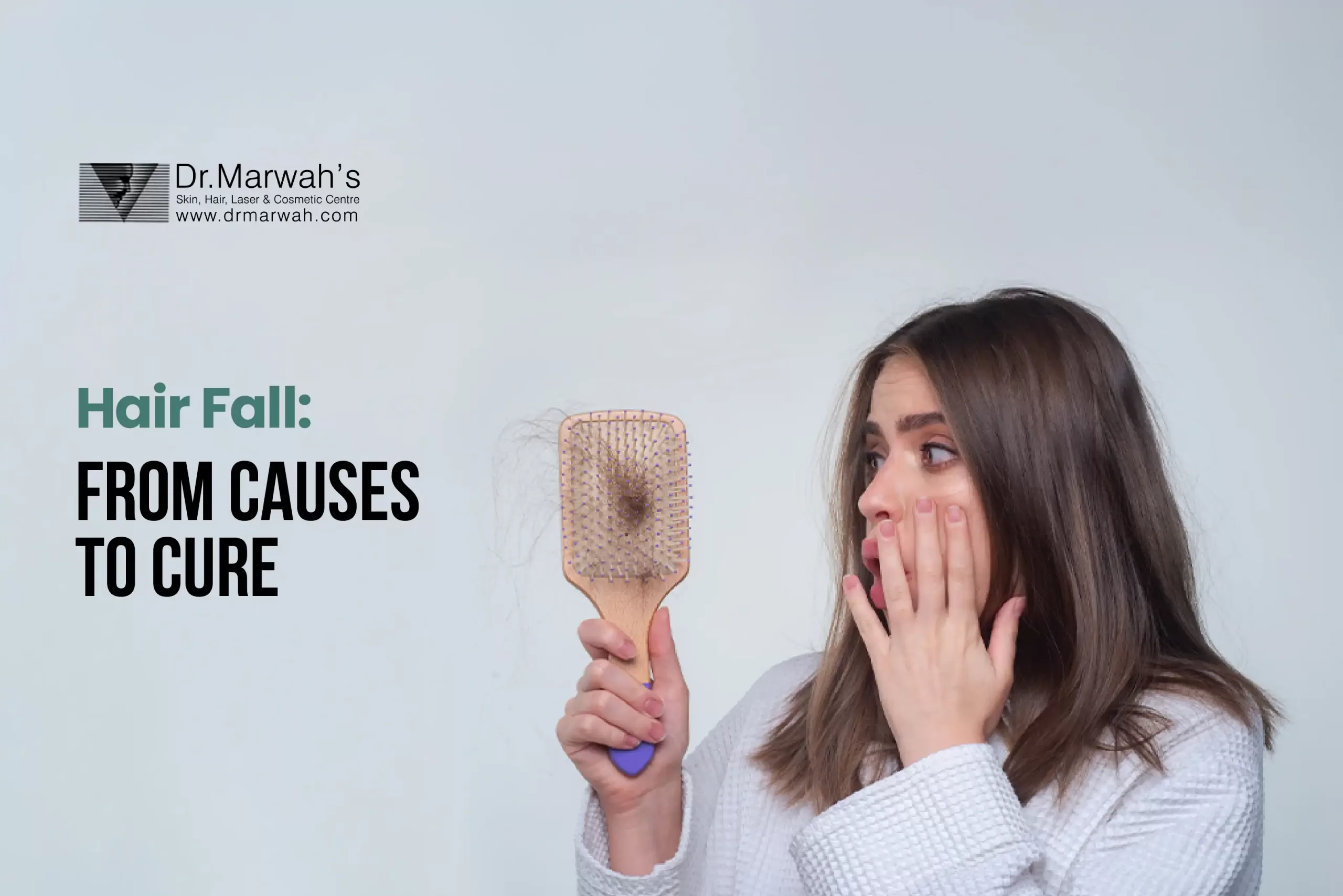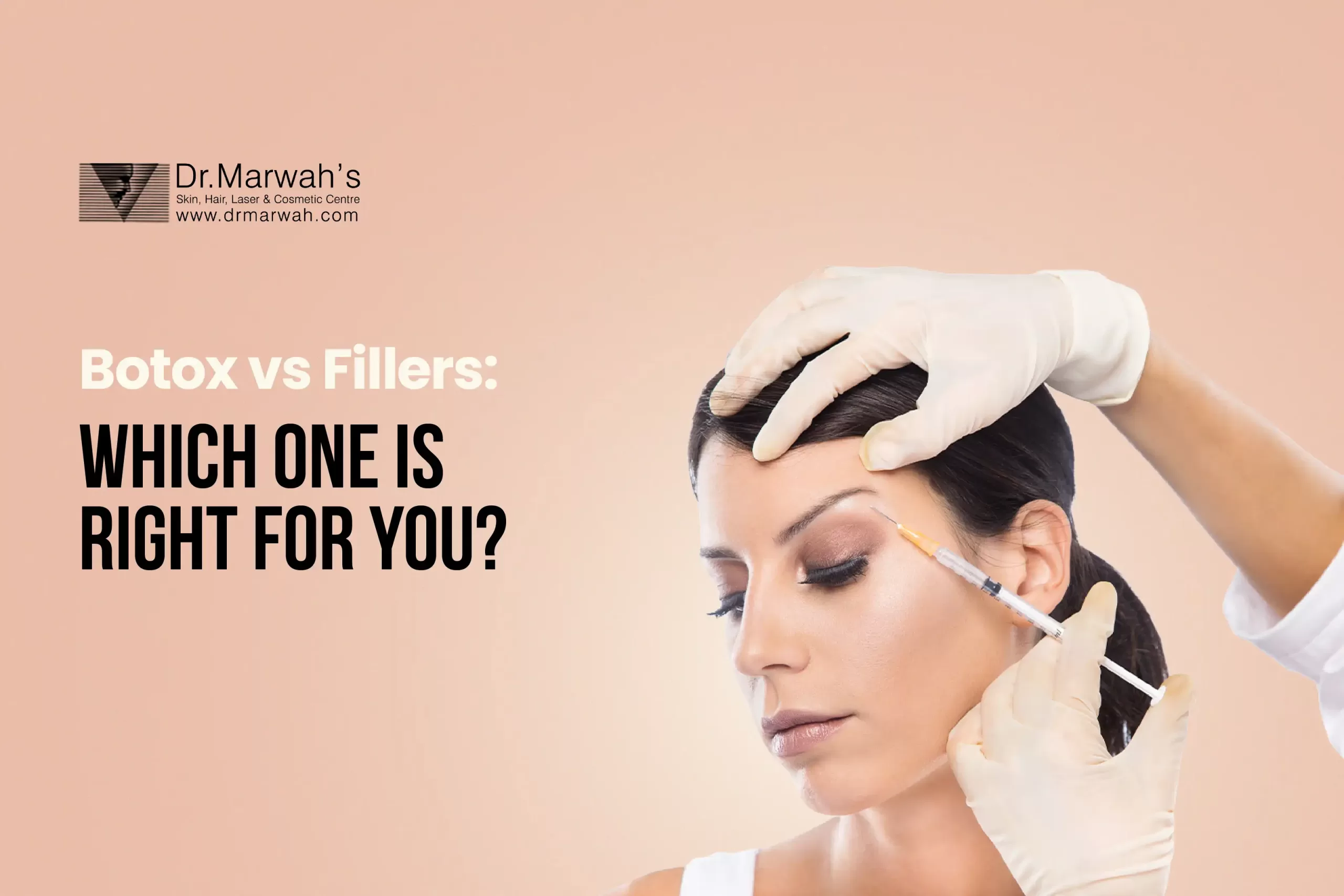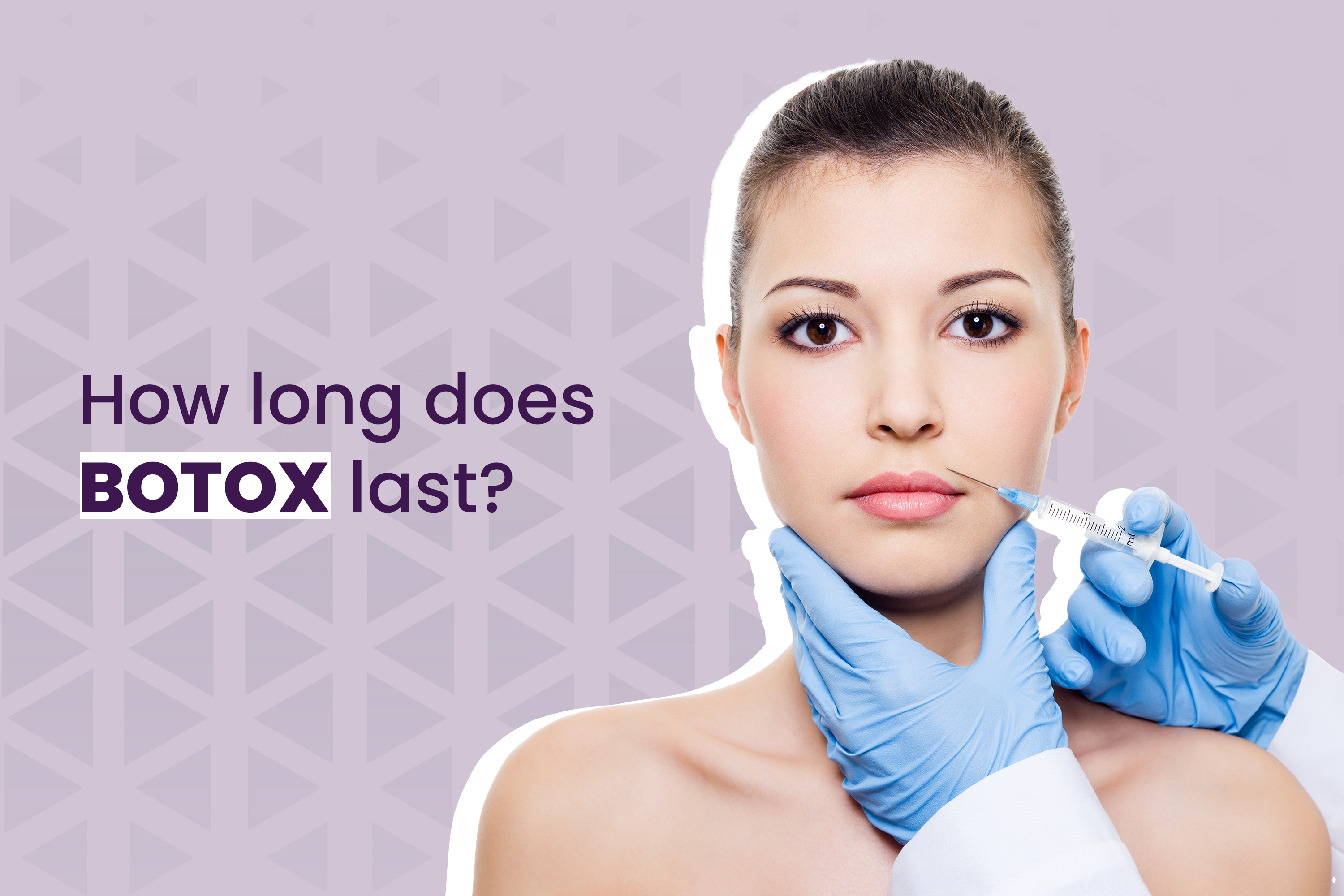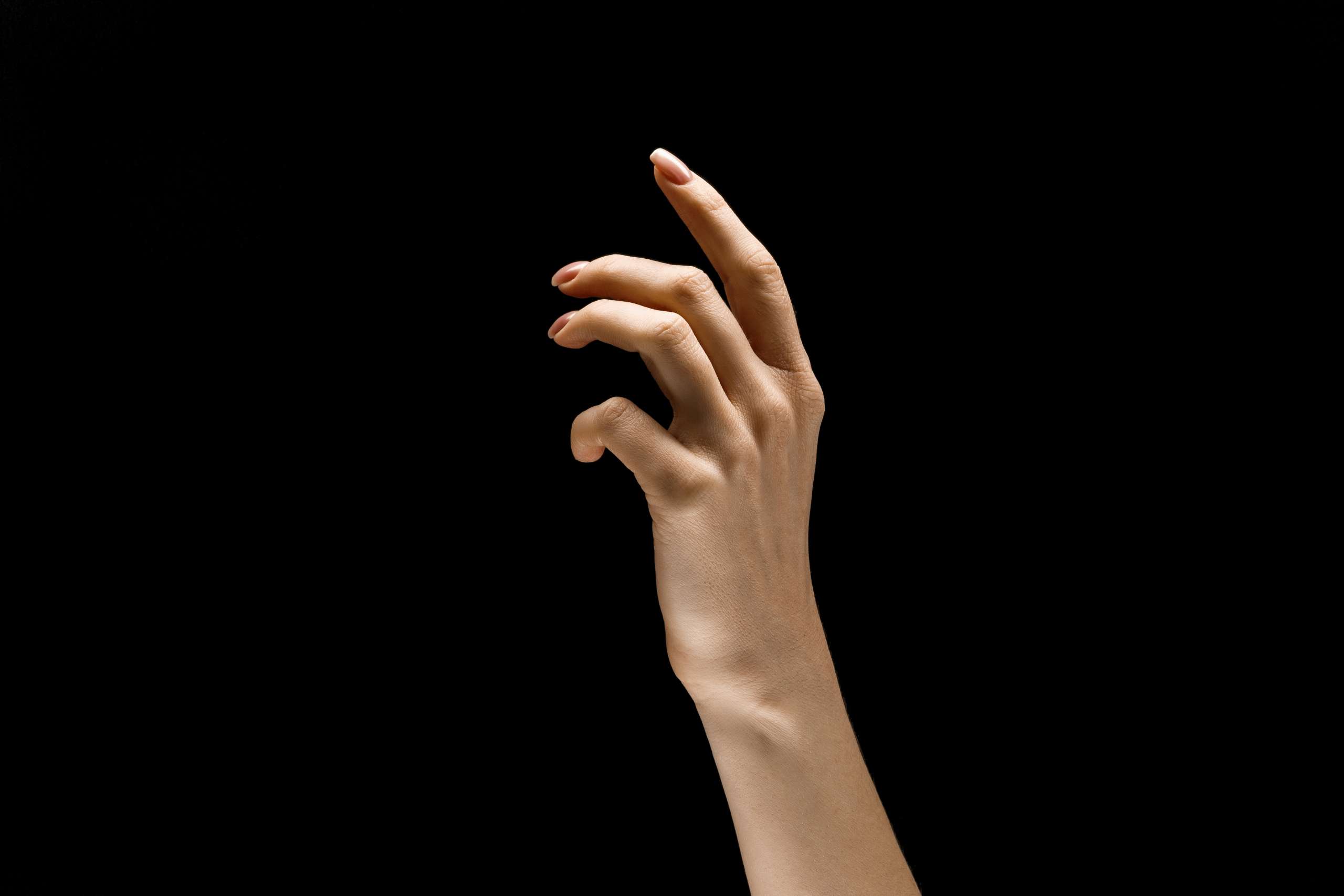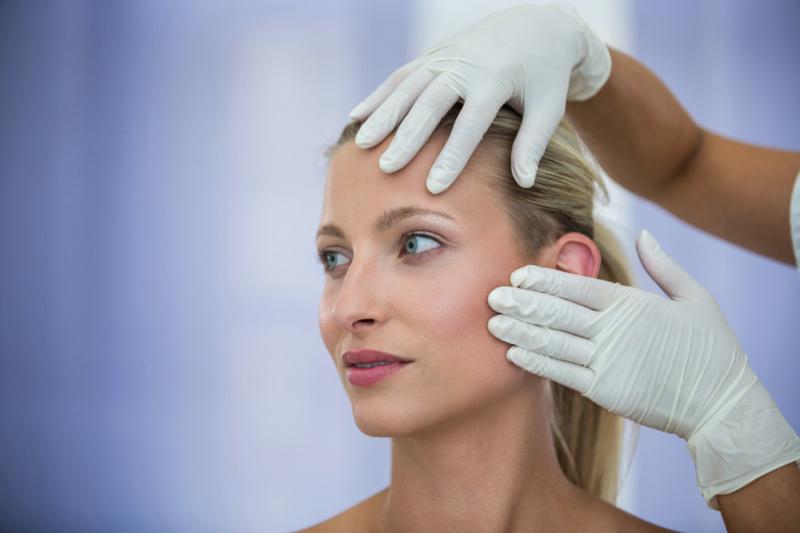Imagine waking up to find strands of hair on your pillow or noticing your parting looking wider in the mirror. These small moments can shake your confidence and leave you wondering, “Why is this happening to me?”
Hair fall often begins gradually. You might see a few extra strands in your brush or on the bathroom floor. But it’s not just about appearance. Hair loss can quietly affect your self-esteem and make you feel self-conscious in everyday situations.
The reassuring truth is, you’re not alone. Millions of people experience hair fall, and while it may seem complicated, the path to managing it is clearer than ever. It all begins with understanding what’s causing the hair loss and learning what steps you can take to address it.
In this guide, we’ll explore the most common causes of hair fall, how to identify what’s triggering yours, and which treatments can truly help.
When Does Normal Hair Fall Become a Problem?
Every scalp sheds about 50–100 hairs a day as part of the natural growth cycle. This balance keeps your hairline and volume steady. When that equilibrium tips due to external or internal factors, you’ll notice thinning, receding hairlines, or patchy loss, all hallmarks of excessive hair fall.
What’s Normal vs. Excessive?
If you’re consistently seeing hair on your pillow or in the shower or notice visible thinning on the scalp, it could be a sign of excessive hair fall. This often indicates an internal imbalance, medical condition, or lifestyle habit that needs attention.
a) Normal shedding: Up to 100 hairs daily during brushing or washing.
b) Telogen effluvium: A stress-induced surge in resting-phase hairs, causing sudden, diffuse shedding. Hair usually regrows in 3–6 months.
Understanding whether you’re experiencing benign shedding or a more serious pattern is the first step to identifying your hair fall reason.
What Are the Common Causes of Hair Fall?
Hair fall can result from several triggers. Sometimes, more than one factor is involved, making it harder to pinpoint the issue without professional help. Let’s take a closer look at the most common causes of hair fall.
Genetic Hair Loss
Androgenetic alopecia is the leading hair fall reason globally. This type of hair loss is inherited and can affect both men and women. In men, it usually begins with a receding hairline and thinning crown. Women may notice a gradual widening of the part or overall volume loss.
Genetic hair loss tends to progress with age, but early intervention can slow it down. Treatments like minoxidil, PRP therapy, and hair transplants offer real hope in these cases.
Want to learn more about hairline restoration? Read our blog on Hairline Reconstruction
Hormonal Imbalances
Hormones play a huge role in hair growth. Any shift, such as those experienced during pregnancy, postpartum, menopause, thyroid issues, or with PCOS, can affect the hair cycle. The imbalance can force hair follicles into a resting phase, causing strands to shed prematurely.
This type of hair fall can often be managed by correcting the underlying hormonal issue, along with treatments to support regrowth.
Nutritional Deficiencies
Your hair needs nutrients just like the rest of your body. When you’re low on iron, protein, Vitamin D, B12, or zinc, your strands can weaken and fall out. Fad diets or sudden weight loss also deprive your body of essential nutrients, triggering sudden hair fall.
Correcting these deficiencies through diet, supplements, and medical guidance can help restore balance and support healthier hair.
Physical or Emotional Stress
Chronic stress or sudden trauma can shock your hair follicles into a resting state, a condition known as telogen effluvium. This leads to diffuse hair fall across the scalp, usually noticeable a few weeks or months after the stressful event.
The good news is that stress-related hair loss is often reversible. Once the stressor is removed and the body stabilizes, hair tends to grow back within a few months.
Styling and Product Damage
Frequent use of heat styling tools, tight hairstyles, and chemical treatments can cause hair shaft breakage and damage the follicles over time. Traction alopecia, caused by excessive pulling on the hair, can become permanent if not addressed early.
If your hair fall reason is related to mechanical or chemical damage, switching to gentler hair care practices can make a significant difference.
How to Identify Your Hair Fall Reason
Before starting any hair fall treatment, identifying the actual cause is essential. Guessing or self-treating with over-the-counter products may not only be ineffective but could also worsen the problem.
Medical and Lifestyle History
Your doctor will ask about family history, recent life changes, diet, stress levels, and hair care routine. This helps in spotting obvious external or genetic causes of hair fall.
Blood Tests and Hormone Panels
Testing for iron levels, thyroid function, Vitamin D, and B12 can uncover deficiencies that might be affecting your hair growth.
Scalp Examination
Using a dermatoscope, your doctor can check for signs of inflammation, thinning, or scarring. Sometimes, a small biopsy may be needed to rule out autoimmune causes.
Hair Pull and Density Test
These simple in-clinic tests help assess how much hair you’re shedding and whether miniaturization or thinning of hair strands is present.
Accurately pinpointing your hair fall reason ensures that subsequent treatments target the real culprit, rather than applying a generic remedy.
What Hair Fall Treatments Actually Work?
Once your hair fall reason is known, a personalized plan can be developed. Here are some medically backed hair fall treatments that deliver real results.
1. Platelet-Rich Plasma (PRP) Therapy
PRP therapy begins with drawing about 30 to 60 ml of your own blood. This blood is then spun in a special machine to separate and concentrate growth factors from your plasma. The rich plasma is then injected into areas of your scalp where hair is thinning.
Multiple scientific studies and trials have shown that PRP can lead to a noticeable increase in hair density. In fact, one major review found clear improvements in both hair count and thickness, all with minimal side effects.
Want to know how PRP works? Explore our detailed blog on PRP Hair Regrowth Treatment
2. QR678® Growth Factor Injections
QR678® is a unique treatment that uses a mix of special proteins and growth factors — like VEGF, bFGF, IGF-1, KGF, thymosin β4, and copper tripeptide-1. These are delivered into the scalp using tiny injections. This helps stop hair fall and makes your hair strands thicker and fuller.
Clinical studies show that more than 85% of patients who received eight sessions (done monthly) noticed much less hair fall and visible regrowth. Advanced imaging also confirmed a rise in strong, healthy hair strands.
3. Follicular Unit Extraction (FUE) Hair Transplantation
FUE is a surgical method where individual hair follicles are taken from areas of your scalp with healthy hair and carefully implanted into bald or thinning spots. It’s a same-day procedure and doesn’t involve big cuts or stitches, so it leaves very minimal marks.
According to a summary published by NCBI, FUE now makes up 99% of hair transplant surgeries done today. When done by skilled professionals, clinics report a success rate of 95% to 100%, with the results looking completely natural.
4. HydraFacial Keravive™ Scalp Revitalization
This treatment is like a facial, but for your scalp. It uses a gentle suction technique to clean out dead skin, oil, and product buildup. After that, a special serum full of nourishing peptides is infused into your scalp to refresh and hydrate it.
Dermatologists have seen major improvements in scalp dryness, flakiness, and overall hair fullness, sometimes even after just one session.
5. Exosome-Based Rejuvenation
Exosome therapy uses tiny messengers taken from cells that are packed with healing and regenerative signals. These exosomes are applied to the scalp to help wake up sluggish hair follicles, calm inflammation, and support the growth of new hair.
While research is still ongoing, early results show that this therapy can improve both skin and hair health, all with zero downtime, making it a promising add-on for anyone looking for non-surgical hair fall treatment.
No two people experience hair fall in exactly the same way. That’s why you should combine these treatments based on your specific condition, needs, and goals. Whether used alone or in combination, these options don’t just treat symptoms; they target the actual causes of hair fall, giving you lasting results and your confidence back.
How Soon Can You See Results?
Hair growth is a gradual process. Visible improvement often starts after three to four months of consistent treatment. Full results from procedures like PRP or transplants can take six to twelve months. Consistency, patience, and regular follow-ups with your doctor are crucial during this journey.
Prevention is Better Than Regrowth
While some hair loss is inevitable with age or genetics, many cases can be delayed or prevented through early intervention.
Nourish from Within
Make sure your meals include enough protein, iron, vitamins, and healthy fats. Stay hydrated and avoid extreme diets.
Be Gentle with Your Hair
Limit heat styling, avoid tight hairstyles, and choose gentle shampoos and conditioners free from sulfates and harsh chemicals.
Keep Stress in Check
Sleep well, stay active, and try relaxation practices like yoga or journaling to reduce daily stress that may trigger hair fall.
Final Thoughts
Hair fall can be distressing, but it doesn’t have to define you. From identifying the causes of hair fall to choosing a personalized hair fall treatment, science and innovation are on your side. There’s no shame in asking for help. Whether you need guidance on mild thinning or advanced restoration, real solutions start with expert consultation and care.
At Dr. Marwah’s Clinic, we understand that hair loss is personal. Our advanced diagnostics and evidence-based treatments, from PRP to hairline reconstruction and transplant, are designed with precision, care, and your comfort in mind.
Let us help you reclaim your hair and your confidence. Book a consultation today and begin your journey toward hair restoration with experts you can trust.

